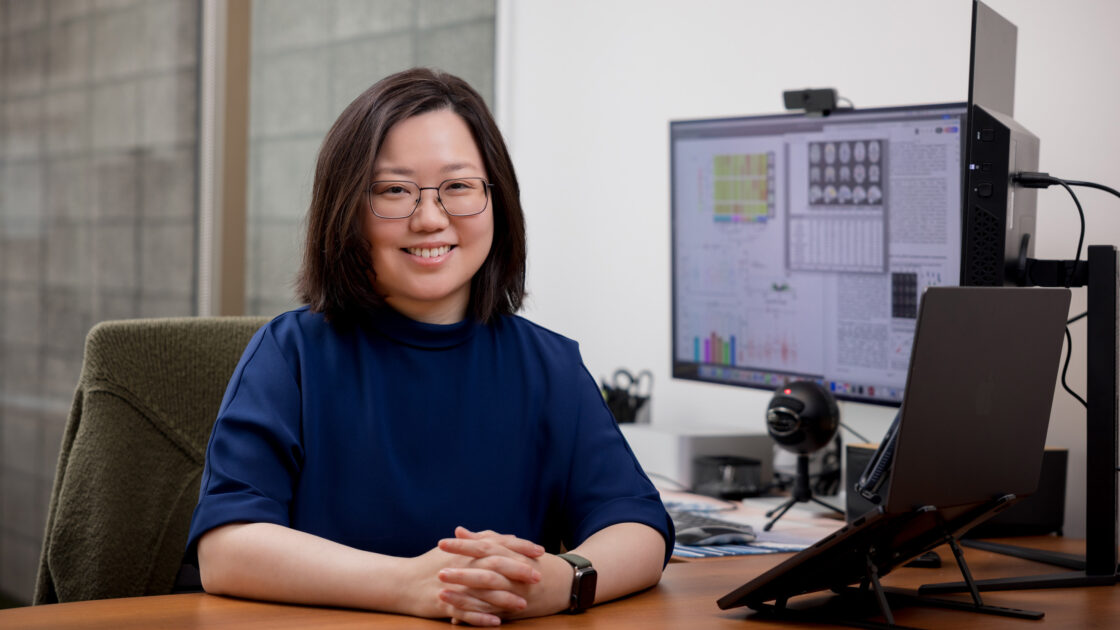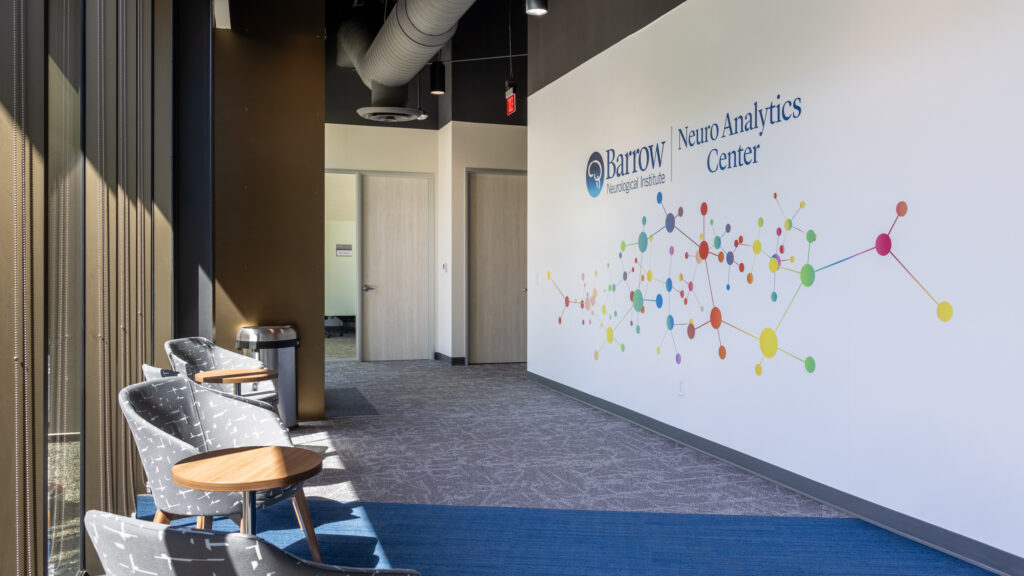
NIH Funds Research to Demystify White Matter Hyperintensities
What, exactly, are those white spots often seen on brain imaging, and what do they tell us about our brain health? A neurologist-scientist at the Barrow Neuro Analytics Center is harnessing the power of machine learning to better understand white matter hyperintensities and what we can do about them.
White spots on the brain are a frequent finding on imaging, but we still know little about their impact on brain health. Chia-Ling Phuah, MD, MMSc, a neurologist-scientist at Barrow Neurological Institute, hopes to change that with the support of a $3.9 million R01 grant from the National Institutes of Health (NIH).
The five-year award will allow Dr. Phuah and her team to employ artificial intelligence to analyze vast amounts of neuroimaging and genetic data in hopes of identifying patterns in the distribution of white matter hyperintensities. By demystifying the role of white matter lesions in brain health, this project could mark a key step toward improving the diagnosis, prognosis, and treatment of various neurological diseases.
Dr. Phuah is partnering with two other institutions on the project. At Washington University in St. Louis, her collaborators include Associate Professor of Neurology Yasheng Chen, DSc, and Assistant Professor of Psychiatry Laura Ibanez, PhD. Vascular neurologist Matthew Flaherty, MD, at the University of Cincinnati, also is an investigator on the study.
What Are White Matter Hyperintensities? Studies Find ‘a Mixed Bag’
White matter hyperintensities are commonly seen on magnetic resonance imaging (MRI) scans of older adults. They’re so common, in fact, that the scientific and medical communities have long attributed them to normal aging.
“If we scanned 10 people in their 60s, probably nine of them would have some of these white spots,” said Dr. Phuah, who serves as the principal investigator on the grant. “However, in the last decade or so, we’ve come to realize that they are probably an indicator of brain health—and the more white spots you have, the unhealthier your brain is.”
Studies of large populations have linked white matter hyperintensities to stroke, Alzheimer’s disease, and increased mortality overall. The problem is that these lesions all look very similar on MRI. “We see all of this association, but we really don’t know what to tell patients,” Dr. Phuah explained. “Some people have a lot of these white spots and do pretty well, while others don’t have many but do poorly.”
In postmortem studies of human brains, researchers examined these lesions under microscopes and found abnormalities ranging from damaged blood vessels to deteriorating nerve cells. “So even looking at the pathology, it’s a bit of a mixed bag,” Dr. Phuah said.
Accelerating Discoveries Through Machine Learning
How, then, can we look at white spots on an MRI and know which disease process they’re indicating, and whether anything can be done to help the patient?
To find answers, Dr. Phuah turned to unsupervised learning—a powerful application of artificial intelligence in pattern recognition that enables computers to analyze and learn useful features from images without human intervention. “Machine learning is fantastic in its ability to discover hidden structures in data that we can’t even fathom,” Dr. Phuah said.
Her preliminary work yielded promising results, leading her to pursue this R01 grant. “For example, we found one particular pattern that is associated more with people who have Alzheimer’s disease and another that is more associated with people who have vascular risk factors, like high blood pressure and diabetes,” she explained.
In addition to analyzing a larger amount of data—from nearly 70,000 individuals across seven cohorts—Dr. Phuah and her collaborators will use this funding to gain a better understanding of the molecular makeup of these different patterns. In other words: Are there genetic factors involved in driving these lesions to form?
“Dr. Phuah is leveraging the power of the new Barrow Neuro Analytics Center to conduct a highly innovative study that will use machine learning to develop a personalized medicine approach to characterizing cerebral white matter disease and advance treatments for this critical contributor to dementia and stroke. This is exactly the kind of groundbreaking work for which we designed this Center.”
Brad Racette, MD, Barrow Chair of Neurology
Tackling this question will involve combining MRI images with each person’s genetic information and analyzing their entire genome. Identifying genetic factors could also reveal potential new drug targets for treating diseases associated with white matter hyperintensities. This work ties into the emerging concept of personalized medicine, which takes individual patient differences into account—such as genetics—to determine the best approach to prevent and treat disease.
Furthermore, the dataset includes patient outcomes, so Dr. Phuah and her team will be able to see whether these individuals with white matter hyperintensities went on to develop neurological diseases, such as stroke or Alzheimer’s. This could help doctors better predict who is at risk for which diseases, allowing them to better manage the expectations of patients and their loved ones and possibly intervene earlier in the disease process.
“These white matter spots may appear years before the symptoms do,” Dr. Phuah said. “So, we have this golden window to intervene, if we know precisely what to do.”
Barrow Neuro Analytics Center: The Perfect Home Base
Dr. Phuah will perform this work at the Barrow Neuro Analytics Center, which she helped establish with Barrow Chair of Neurology Brad Racette, MD, in February 2024. They envisioned a vibrant and innovative environment that would integrate advanced computational and statistical methods, immense computing power, and multidisciplinary collaborations to harness the full potential of big data.
“Dr. Phuah is leveraging the power of the new Barrow Neuro Analytics Center to conduct a highly innovative study that will use machine learning to develop a personalized medicine approach to characterizing cerebral white matter disease and advance treatments for this critical contributor to dementia and stroke,” Dr. Racette said. “This is exactly the kind of groundbreaking work for which we designed this Center.”
While Dr. Phuah cautions that AI-based predictions must be validated with what’s already known, to ensure researchers aren’t led down the wrong path, machine learning brings several advantages: It can process enormous amounts of complex data, and do it quickly and precisely.
“Our programs can run for weeks on a supercomputer,” she said. “But we couldn’t do this project without that computing resource. That’s why this work has to be done, and can only be done, at a facility such as the Barrow Neuro Analytics Center.”


